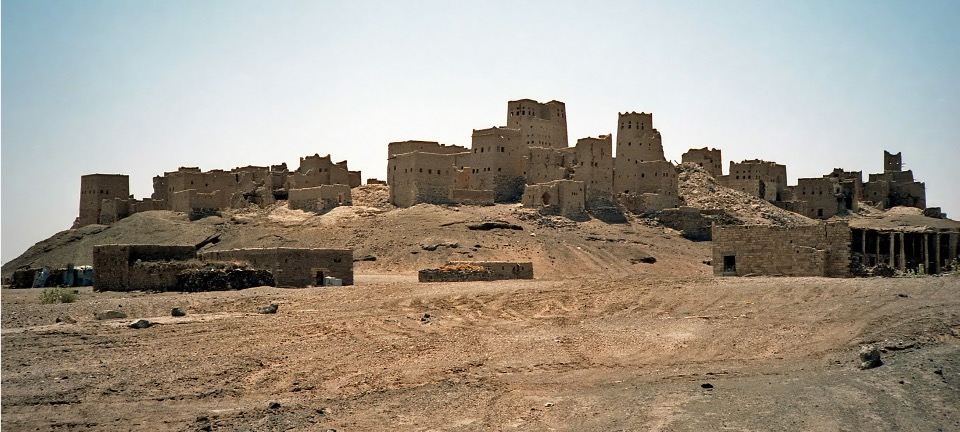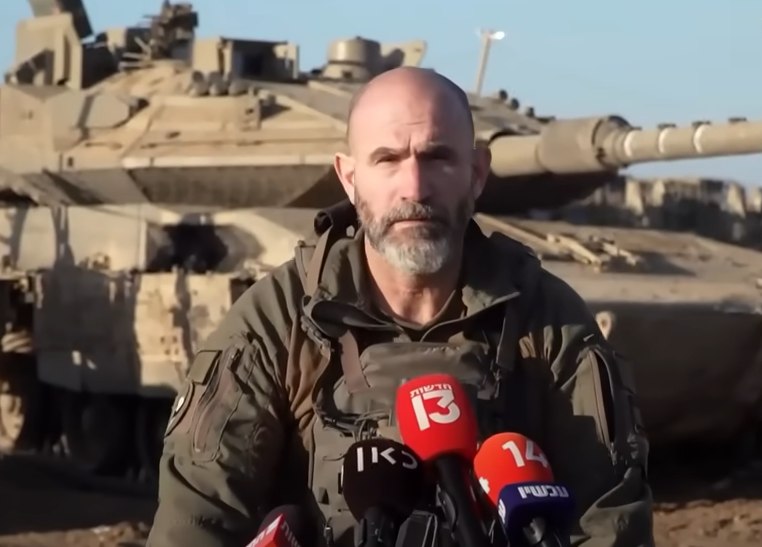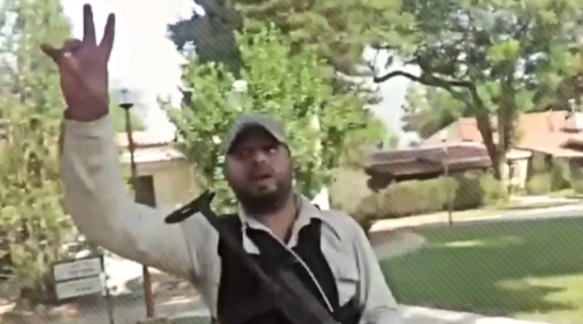The West is focusing on the tragic humanitarian costs of the war in Yemen while turning a blind eye to the significant strategic implications of a Houthi/Iranian victory. This approach imperils Middle Eastern and Western security.

Dr. Rubin was founder and first director of the Israel Missile Defense Organization in the Israel Ministry of Defense, which developed, produced and deployed the country’s first national defense shield – the Arrow missile. He subsequently served as Senior Director for Proliferation and Technology in the National Security Council, and directed several defense programs at the Israel Aerospace Industries and in the defense ministry. He was twice awarded the Israel Defense Prize. He has been a visiting scholar at the Stanford Center for International Security and Arms Control.
The article was originally published at The Jerusalem Institute for Strategy and Security.
Introduction
After six long and blood-soaked years, the civil war in Yemen shows no sign of ending. The Ansar Allah movement (known as the “Houthis”) are fighting the El Hadi internationally recognized Government of Yemen supported by a Saudi-led Arab coalition. All efforts to end the war by diplomacy have failed. In essence, this is a proxy war between Iran (which supports the Shia Houthis) and the Sunni Arab world. The outcome of this war may be fateful to the future of the Middle East. If Iran prevails and the Houthis manage to overrun all of Yemen, the strategic sea route of the Bab El Mandab, which is one of the seven major sea lanes carrying the world’s maritime trade, will be controlled by Iran.
Perhaps emboldened by the Biden administration in the US, the Houthis recently have launched a new military effort to break the stalemate. Their latest offensive in the oil rich province of Marib seems to be an attempt to tip the war in their favor. The capture of Marib would provide the Houthis with all their energy needs, while denying oil and gas from the opposing Hadi government. The public impact of such a local victory may take the fight out the Saudi-led coalition and gain the Houthis a superior position in any negotiations over the future of Yemen. The outcome of the battle for Marib may have a significant impact on the future of Yemen and the entire Middle East, including the security of Israel. In the meanwhile, the tactics and weapons used in this battle demonstrate the latest Iranian military doctrines and are worthy of being studied closely.
Background
Marib, the ancient capital city of the Kingdom of Saba (usually identified with the biblical Sheba whose legendary Queen visited King Solomon in Jerusalem) used to be one of the main tourist attractions of modern Yemen. Tour buses were replaced by gun totting jeeps after the eruption of the civil war in 2015, when the Al Houthi faction seized Yemen’s capital city of Sana’a and launched an offensive to overrun the rest of the country. Their attempt to capture the port city of Aden was foiled by a counterattack of the incumbent, internationally recognized government of Prime Minister El Hadi. Another foiled offensive was the attempt to capture the town of Marib, the regional capital of the Marib governorate, which roughly encompasses the ancient domain of the Queen of Sheba.
Whatever yellow gold there existed in ancient Kingdom of Sheba has vanished over the centuries and has been replaced by black gold in the form of oil and gas deposits. Today the Marib governorate has the richest oil reserves in Yemen. As such, and due to Marib’s proximity to Sanaa, the Houthis tried to capture the town as soon as they seized power in 2015. However, as most of the tribes of the Marib governorate are Sunni rather than Shiite, and they have not welcomed the invading Houthi forces. Since then, the local Marib militias, aided by Saudi Arabia and UAE ground troops and air power, managed to rebuff the Houthi attack.
This situation has now changed, as the Houthis launched a February offensive to capture Marib and its outlying districts. Houthi forces reportedly have broken through the defender’s lines and fought their way to the outskirts of the town. The main brunt of resisting the Houthi onslaught falls on the Royal Saudi Air Force (RSAF), which is conducting intensive air to ground operations to slow the Houthi advance.
Evolution of the Battle
Ever since its failure to capture Marib in 2015, the Houthi regime in Sanaa has been conducting a persistent campaign of harassment against the forces defending Marib. What motivated the Houthis to launch a full-scale assault at this time remains unclear. Perhaps this is connected to the Biden administration’s decision to end its support for Saudi operations in Yemen and to revoke designation of the Houthis as a terrorist organization. Whatever the case, the Houthis are throwing everything they have into this offensive, withdrawing forces from other fronts in Yemen (such as the contested city of Taiz) to reinforce their Marib offensive (Arab News, March 24, 2021).
According to Michael Knights and Alex Almeda (writing for The Washington Institute for Near East Policy), the Houthi ground offensive employs masses of poorly trained conscripts, led by a corps of experienced NCOs and officers. This is aided by precision missile and UAV strikes on command centers within Marib itself. Since the most significant resistance comes from the RSAF manned and unmanned aircraft, the Houthis are conducting in parallel a vigorous interdiction air campaign against RSAF bases in southern Saudi Arabia, using its burgeoning armory of precision air weapons. Thus, the number of Houthi rocket and UAV attacks has risen sharply against RSAF bases in Khamis Mushait (where the giant King Khalid RSAF base is located) and the cities of Abha and Jissan, close to the Yemeni-Saudi border. The tactical harassment of RSAF bases in southern Saudi Arabia is accompanied by an intensification of the strategic campaign against Saudi Arabia’s oil industry and state symbols in Riyadh and other major Saudi cities.
The media offers only a fragmentary and incomplete picture of detailed operations, yet even this incomplete information is indicative of a major Houthi effort to interdict RSAF offensive capabilities in Yemen. It is attacking Saudi bases near the Yemeni border and forcing the Saudis to divert resources for defending cities and oil facilities deep inside the Kingdom. Between February 2 and March 26, the town of Abha was struck five times by at least 10 UAVs; Khamis Mushaiet suffered nine attacks by at least 14 UAVs; and the city of Jizan was attacked three times, twice by ballistic missiles and once by UAV’s. In addition, the SAF reported more UAV attacks that were intercepted before reaching their undisclosed targets in southern Saudi Arabia.
Concurrently, the Houthis launched a series of deep raids into the Kingdom’s hinterland. Since the beginning of the Marib offensive, the capital city of Riyadh has been attacked on four separate occasions, once by a ballistic missile (that was convincingly destroyed in midair by defending Patriot missiles) and three times by UAVs, targeting “sensitive targets” within the city as well as nearby oil installations. One jet-propelled UAV was launched at the port of Jeddah on the Red Sea coast, 700 km. from the Yemeni border.
The most spectacular attacks to date were two major raids on March 7 and March 26 that struck even deeper into the Kingdom and were combined with tactical attacks along the Yemeni-Saudi border. In the March 7 raid, the Houthis launched no less than 14 UAVs and eight ballistic missiles at various targets deep inside Saudi Arabia and against Saudi towns in the southwest of the Kingdom. The most significant attack was carried out by UAVs on the giant oil installations in Ras Tanura on the coast of the Persian Gulf, about 1,200 km. from the nearest Houthi held territory, and by one ballistic missile targeting the nearby Persian Gulf port of Dammam, The Saudi military announced that they had managed to intercept the ballistic missile, the debris of which fell in the nearby city of Dhahran. Later, Saudi Arabia announced the interception of 12 Houthi UAVs, but it was not clear whether the downed UAVs were part of the Ras Tanura attack package. Initially, the Saudis denied any damage in Ras Tanura, but several days later they conceded that one of the oil storage tanks there was hit. Following the attack, oil prices spiked briefly before returning to normal. The Saudis maintain that the UAVs which attacked Ras Tanura did not come from the direction of Yemen but from a northerly direction, alleging that (like the devastating September 14, 2019 attack on the oil installations of Abqaiq and Khurais) the March 7, 2021 attack originated in Iran or Iraq. The Saudis did not release any information on the outcome of the concurrent Houthi air attacks on its southern cities bordering Yemen.
A repeat performance of this major Houthi effort occurred on March 26, coinciding with the sixth anniversary of the civil war in Yemen. The Houthis launched 12 UAVs and eight ballistic missiles at Ras Tanura (located on the Persian Gulf coast) and on the oil facility in Yanbu (located on the Red Sea coast about 1,000 km. from the Yemeni border). These deep strikes bracketed Saudi Arabia from east to west. Concurrently, the Houthis launched a swarm of eight UAVs at a new oil installation in Najran, close to the Yemeni border. While the Saudis did not concede any hits or damage in the strategic attacks, they did confirm that one oil storage tank was hit in nearby Najran. From the somewhat blurry satellite picture available in the open literature, it seems that the one hemispherical storage tank in Najran was punctured in a pattern like the September 14, 2019 attack on Abquiq.
The impact of these wide ranging “operations of resistance” by the Houthis have been relatively minor to date, causing practically no casualties and very limited material damage. Moreover, they have not halted the flow of regular oil exports, nor have they significantly affected oil prices.
It has been speculated that the large raids on Ras Tanura on March 7 and 26 were an attempt to emulate the devastating Houthi raid of September 14, 2019, which cut Saudi Arabia’s oil production by one half for several months. For now, enhanced Saudi defenses seem to have prevented this (mainly by manned interceptor fighters armed with air-to-air missiles).
According to Riad Kahwagi (Breaking Defense, March 30, 2021), the RSAF has drawn some lessons from its failure to defend their oil installations in September 2019. The RSAF is now using Early Warning and Control (AWACS) aircraft to detect incoming Houthi UAVs. The Saudis claim scores of successful interceptions (substantiated by published video clips taken from the gun cameras of F-15 fighters). For example, on March 26 the Saudis claimed to have shot down all eight of the UAV’s targeting Najran and released gun camera videos showing five convincingly distinct interceptions. The RSAF also claimed success in “thwarting” UAV attacks on Ras Tanura. Yet on several occasions, swarms of Houthi UAVs penetrated unchecked onto the heartland of the Kingdom, such as a swarm of six UAVs that reached an oil distillation plant near Riyadh on March 19 and set it ablaze.
The most noticeable trend in current Houthi air war against Saudi Arabia is the general shift from ballistic missiles to UAVs, most of them of the slow propeller type. This exploits the weakness of Saudi Arabia’s Western-supplied ground-based air defenses, the older generation of which has scant abilities to detect low and slow flying aircraft. (The older Soviet ground-based air defenses of Armenia similarly failed to detect and destroy lethal Azeri UAVs, which wreaked havoc to Armenian armor and logistics during the recent war in Nagorno Karabagh.)
Still, while Houthi-launched UAVs are still able to reach the furthest corners of Saudi Arabia, it seems that the RSAF has got the measure of UAV threats, at least in the most heavily attacked southwestern districts bordering with Yemen. The Saudi Ministry of Defense releases daily videos of successful shoot-downs of Houthi UAVs. Moreover, the RSAF is combining its interceptions of Houthi UAVs with preemptive ground attacks. For example, on March 6, 2021 the RSAF released a gun camera video of a Houthi UAV being destroyed on the ground while trying to take off. Ten days later, the RSAF claimed to have destroyed missile bunkers and UAV launchers in the town of Sa’ada, the center of the Houthi nascent military industry.
At the time of this writing, the battle for Marib is still undecided. The Houthis seem to be encircling the town by pincer movement and progressing towards their objective, albeit at a slow rate. The pincers have not yet closed, and the battle continues. The intense Saudi air-to-ground interdiction campaign against Houthi troops and logistics has an impact, and the RSAF “has found its feet” in this campaign both defensively and offensively.
Lessons for Israel
While this battle is not over, one important lesson for Israel already is clear. Iranian doctrine now stresses the use of precision suicide UAVs, side-by-side with ballistic missiles, banking on the difficulty of current generation ground-based air defenses to deal with low and slow targets. The ongoing UAV offensive against Saudi Arabia is currently being contained by airborne early warning platforms, working together with manned interceptor aircraft (mostly the heavy, multirole F-15 jet fighter). In full-scale conflicts of the future, the likes of which Israel may face, these platforms are precious resources needed for supporting offensive operations.
UAVs are dominating the battlefields of new wars in the region – from northern Syria to Libya, and from Nagorno Karabagh to the ongoing war in Yemen. The need for independent, effective, yet affordable ground-based defense systems against UAVs that will free precious air power resources for offensive support and strategic missions – is by now clear enough. Such systems should be both “hard” and “soft,” combining anti-UAV kinetic weapons with electronic warfare to disrupt UAV operations.
Strategic Implications
The capture of Marib, if it happens, will provide the Houthis with all energy needs, while denying vital supplies of oil and gas to the internationally recognized Government of Yemen (headed by Abedrabo Mansur Hadi, based in Aden). Beyond this material gain, a Houthi victory in Marib will broadcast a message of Houthi invincibility, which may sap the strength of the Saudi-led coalition and perhaps generate a degree of instability in the Kingdom. This will be a strategic victory of first magnitude for the Houthis and their Iranian sponsors, which will cast a long shadow on any diplomatic process in the region about the outcome of the civil war. President Biden’s new conciliatory policy towards the Houthis may encourage them to spurn any diplomatic solution until they overrun the entire territory of Yemen, thus turning Yemen to another Iranian satrapy (like today’s Lebanon, and in future perhaps Syria and Iraq too).

The West is justifiably focusing on the tragic humanitarian costs of the war in Yemen, yet it seems blind to the strategic implications of a Houthi/Iranian victory. This mistaken approach may imperil Middle Eastern and Western security.
Follow MIDA on social media:







